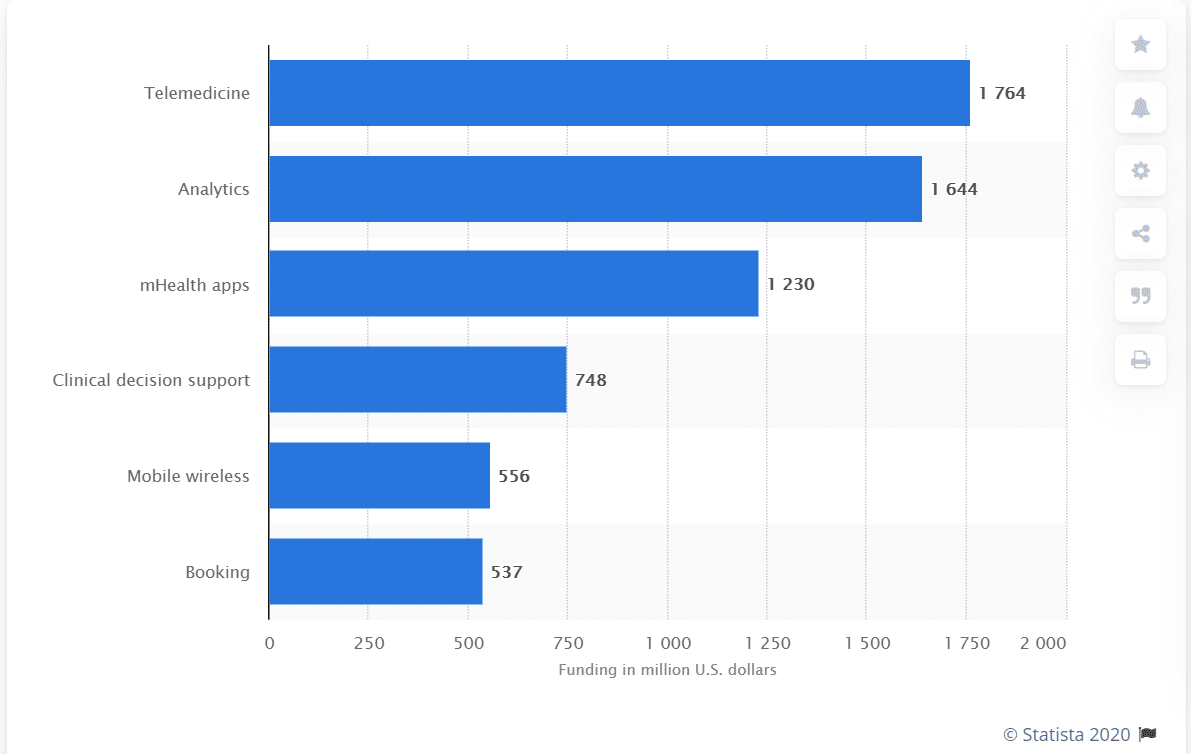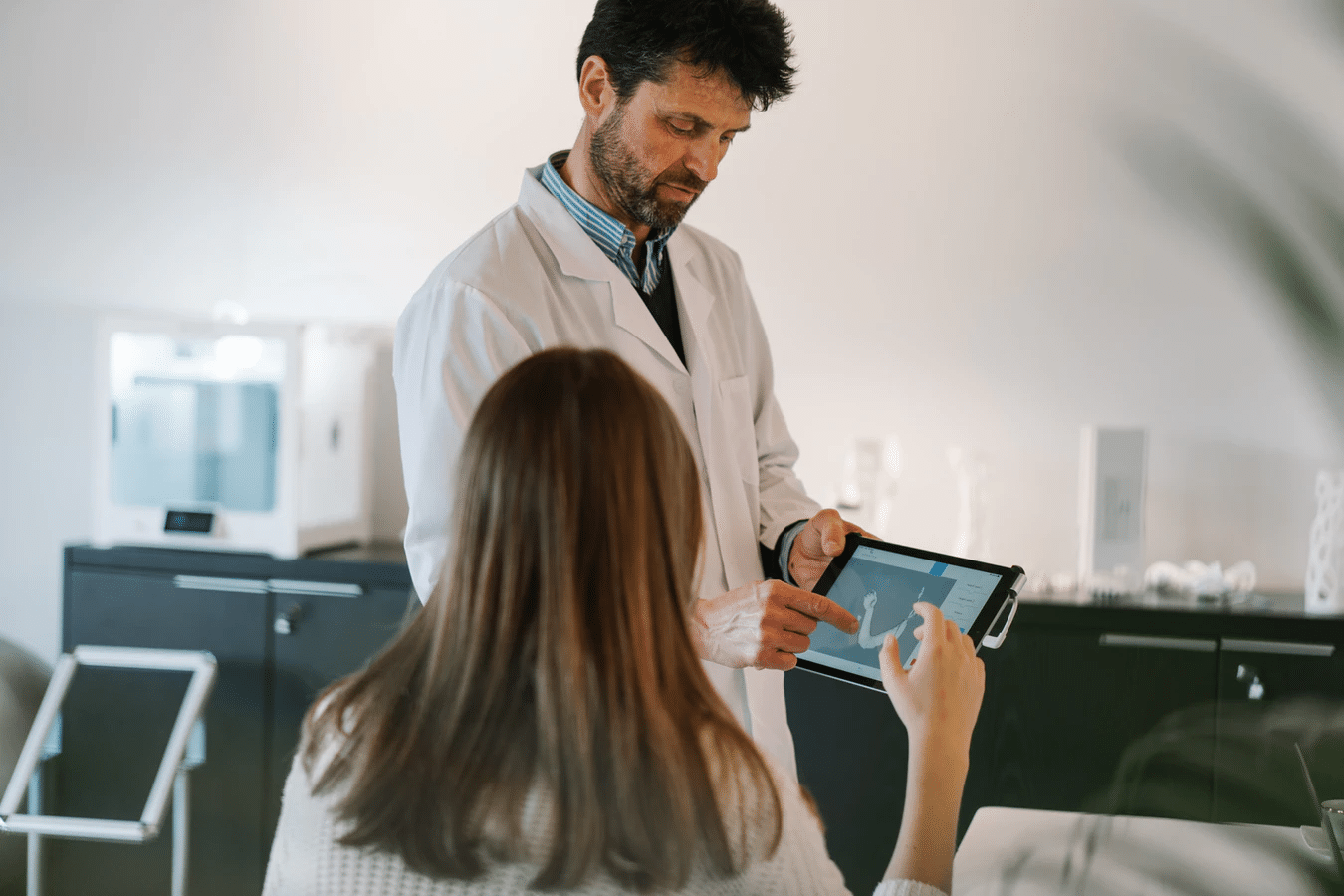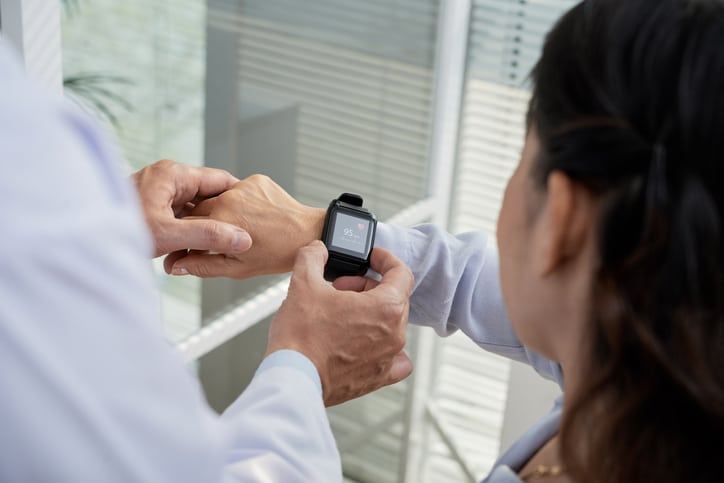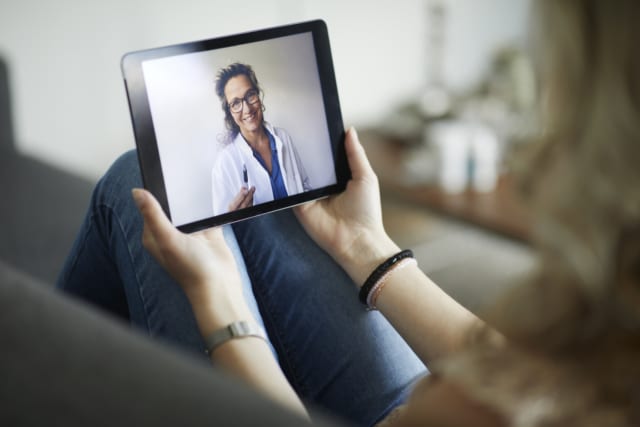Mobile technology, one of the integral parts of digital healthcare and telemedicine, has been revolutionizing the healthcare industry as we know it for the past decade.
In 2010, 35% of US hospitals had integrated telemedicine into their service, including video conferencing, real-time remote monitoring and wireless communications.
In only seven years, according to the same source, that number had grown to 76% of US hospitals digitalising their processes with mobile and other technology.
The trend of using mobile devices to improve patient care and internal operations has been on the rise worldwide.
Read on to see how mobile tech will continue to reshape the industry in the years to come.
What Is Mobile Health (mHealth)?
Mobile health, also known as mHealth, refers to the usage of smartphones, tablets, wearables and other handheld devices to provide healthcare support, easier access to records, improved systems, a better quality of patient care, treatment adherence and much more.
Another important segment of mobile health is providing physicians with access to drug information, the latest medical research and online learning practices on-the-go.
When we look at the mHealth industry at large, there are two distinctive, yet parallel, developing fields:
- Devices, applications and services designed for treatment and patient care
- Devices and wearable technologies designed to enhance the healthy lifestyle and monitor the fitness activities
These two fields have started to merge, cross-pollinating data to form a single path for the development of mobile health.
Before we dive deeper into the most important impacts of mobile technology, let’s take a look at the current state of the industry.
The Current State of the Mobile Health Market
There is no doubt that the use of mobile technology in healthcare has been growing rather quickly in the past years.
In 2019, around 1.23 billion US dollars had been invested in mobile health applications worldwide, making it the third most funded digital health category.

Source: Statista
Besides that, global mHealth revenues are expected to reach 46 billion US dollars in 2020 and to further increase to around 247 billion dollars by 2025, following the fast adoption of mobile devices in both adult and paediatric patient care.
There has also been an expansion of medical records digitisation, especially in the UK.
In terms of particular device and app popularity, the results of a recent study in the UK and Ireland have shown that Apple iOS devices make 70% of overall institutional mobile devices in these markets.
This study has shown that most of the paediatric care sites provide between one and five medical apps on the institutional device. Among those, the British National Formulary (BNF/BNFc) app was the most frequently provided and recommended.
The Benefits of Mobile Technology in Healthcare
Mobile technology has shown great results in improving the quality of patient care, as well as contributing to back-office operations and medical training.
Here are some of the specific benefits of mHealth systems:
- Easier collaboration between labs and specialists
- A streamlined workflow and practice management process
- Enhanced efficiency of healthcare professionals
- Better-informed medication and therapy decisions
- Faster patient-physician communication
- Reduced time spent on filing reports
- Greater transparency of patient insurance claims
- More accurate clinical diagnostics
- Real-time remote monitoring of post-operation recovery
- Targeted and more efficient treatments
- Reduced costs through automation and data-driven operational insights
On the other hand, patients and mobile app users experience benefits such as:
- Personalised treatments
- Remote consultations with specialists
- Timely access to emergency health services
- Easier access to their digital health records
- Greater control over their own health
- Improved medication adherence
- Efficient healthcare spending
Now, let’s take a deep dive into the most important impacts that the usage of mobile devices has on the healthcare industry.
6 Most Important Impacts of Mobile Technology
1. Mobile tech opens faster communication channels and decreases response time.
Mobile technology has opened channels for remote communication between physicians and specialists to quickly get in touch regardless of their location.
This is particularly important in emergency situations, chronic conditions monitoring, post-operation recovery at home and even crises like the ongoing COVID-19 pandemic.
In fact, video conferencing has been of the utmost importance since the beginning of the COVID-19 lockdowns, allowing doctors to provide diagnosis, counseling, and interactive services electronically, reducing the influx of patients into the overburdened hospitals.
Telemedicine can also be a way of asynchronous communication if it isn’t required for a patient and a care provider to be online at the same time.
Either way, faster, personalised and more targeted communication is one of the most important ways that digital technology is impacting the healthcare industry.
Various healthcare software solutions are developed to improve patient satisfaction rates and streamline communication between hospitals, patients, and third-party suppliers.
Another significant segment of this impact is the easier collaboration between physicians and labs.
This way, test results and lab reports can be delivered directly to the care providers’ devices the minute they are available.
It makes it so much easier to immediately adjust the therapy according to the lab results and discuss it directly with a patient.

2. Digital platforms streamline practice management and increase efficiency.
mHealth solutions can substantially improve the workflow and practice management within a healthcare institution.
These digital applications help physicians:
- Access patient data on the go, accelerating response time
- Instantly access patients’ prescriptions and other vital information
- Collaborate with other physicians and delegate care efficiently
- Manage appointments
- And more
mHealth solutions help the administrative staff:
- Collect patient data easily, including signatures, and document scans
- Coordinate engagement with insurance providers, suppliers, and other third parties on the go
- Reduce room for an administrative error
- And more
Digitalised records and automated workflows increase:
- Document processing speed
- Administrative accuracy
- Overall efficiency
3. Medical compliance with patient data protection laws keeps patient health information safe and secure.
Data security, privacy protection, and the safety of personal health information are enormously important parts of the mobile health industry.
Electronic Health Records (EHRs) provide specialists with easy online access to patients’ diagnoses, prescriptions, allergies, intolerances, previous treatments, hospital stays, lab reports, surgical interventions, and other relevant information.
Since these digital summaries of a patient’s medical record include sensitive personal information, all records must comply with data protection regulations, privacy policies, and other applicable laws.
For instance, if your healthcare practice is based in the US, you’d need to comply with the Health Insurance Portability and Accountability Act (HIPPA).
This includes hospitals, clinics, nursing homes, doctors, dentists, pharmacies, chiropractors, and psychologists. HIPPA compliance also applies to lawyers, accountants, and other business associates connected to your practice.
It requires specific rules to secure Electronic Protected Health Information (e-PHI) regarding storing, transmitting, and archiving any individually identifiable health information in a digital database.
In other words, you need to keep your patients’ health data secure at all times.
Any kind of data leakage or a security breach would be considered a serious violation of HIPPA rules.
In 2018 only, the US Office of Civil Rights (OCR) settled 10 HIPPA violation cases totaling 28.7 million US dollars in fines.
In case your private practice is in the UK or elsewhere, but you have a branch in the United States as well, you are also obliged to adhere to HIPPA.
On the other hand, if you are a medical provider in the UK only, you need to follow the data protection act under European Union legislation and comply with the General Data Protection Regulation (GDPR).
Additionally, the National Health Service (NHS) has security policies for public sector health institutions in England, Wales, and Scotland.

4. Mobile apps keep users on top of their prescribed treatment.
When we talk about compliance, we cannot neglect the importance of treatment compliance as well.
This is where devices and mobile apps play a significant role.
Various apps include set-up reminders to nudge patients every time they need to take their medication, book a recurring appointment with a specialist, renew prescriptions, or adjust to a new treatment rule.
This is such an important feature of mobile health apps that gives patients a lot more control over their therapy and helps them follow through.
Family members and caregivers, especially of patients with mental health conditions, can vastly benefit from these features as well. Once they know exactly what they need to do and when, the possibility of an error comes down to a minimum.
Physicians, on the other hand, can use the app reminders to regularly check up on their patients, keep up with the recovery status, or follow up with patients with chronic conditions.
To improve patient care even further, EHRs enable providers to make better-informed decisions according to every patient’s medical history. This means avoiding medication errors and providing far more personalised care.
5. Wearable devices advance real-time remote medical monitoring.
As we already mentioned, wearable technologies designed to enhance the healthy lifestyle and monitor fitness activities are a significant part of mHealth.
Smartwatches, biosensors and wearables like FitBit collect patients’ health and exercise data on a regular basis.
These devices are based on body-sensing technology and can significantly improve the workout efficiency leading patients toward better exercise outcomes.
Apart from helping users monitor their own activities, blood pressure, heart rates or temperature, wearables also help physicians to:
- Securely monitor patients’ daily activities and at-home recovery process
- Compare data from different patients and make informed risk assessments
- Discover new disease-related insights
- Suggest preventive treatments based on those insights
- Save time and resources by communicating and monitoring remotely
According to Accenture, the use of wearable devices by consumers went from 9% in 2014 to 33% in 2018.
In 2020, Business Insider reports that more than 80% of consumers are willing to wear fitness technology.
From simple wristband step counters to highly sophisticated wearable ECG monitors, there is a growing demand for these devices in the market.
Also, more and more companies create wearables for research and development purposes.
For instance, Apple recently developed Movement Disorder API to help researchers gather insights into Parkinson’s disease, while Phillips’ wearable biosensor helps practitioners to prevent cardiac or respiratory arrest in patients with a high risk.

6. Mobile tech and cloud-based storage substantially reduce operational costs.
Thanks to its many benefits, including data-based insights for better diagnostics as well as operations management, automated workflows, increased accuracy and response times, mobile tech saves costs in the long-run.
Additionally, mobile tech comes hand-in-hand with cloud-based storage.
Unlike maintaining a server-based database which can be costly, keeping all patient information and digital records in the cloud has proven to be a cost-effective storage solution for care providers.
The implementation of cloud communications in the public sector could save even more funds depending on the institution size and the scale of internal operations.
Cloud-based storage usually comes with backup and recovery features that provide an important layer of security in case of any system failure or attempt of a data breach, reducing the investment in damage control, and mitigation from the get-go.
And the cost savings don’t end within a healthcare organisation. Different mobile solutions can substantially reduce healthcare costs for patients as well.
Remote communication with doctors, online access to digital records, using apps, and wearable devices to track vital health data at home are only some of the ways patients can manage their healthcare costs more effectively.
Besides money, mobile tech in healthcare also saves time for patients and practitioners alike, with its easy appointment booking and virtual consultation options made possible by the use of information technology and cloud-based solutions.
Conclusion
Without a doubt, mobile health applications and wearable devices have become a significant part of the healthcare industry over the past years.
This is also one of the segments with the highest potential of development in the future, as well as one of the most funded medical fields in 2019 around the world.
The advantages of mobile technology in medical practices are numerous, including faster communication, streamlined efficiency, cost reduction and everything in between.
Used daily by specialists, nurses, lab professionals, patients, their caregivers, and family members, mobile technology has proven to be highly effective in bringing healthcare service quality to the next level.
In the years to come, it seems that advanced wearable devices are going to play an even more significant role than today, helping researchers gain valuable insights and develop efficient preventative strategies for various conditions.
All in all, healthcare systems around the world are embracing the potential of mobile technology to provide greater financial transparency, more accurate diagnostics, and highly effective targeted and personalised treatments.
Originally published Sep 28, 2020, updated Jan 16, 2023



